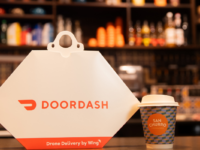Pizza giant Domino’s has posted its weakest half-year profit growth since 2007 and downgraded its second-half same-store sales guidance in Australia.
Revealling a 7 per cent increase in net-profit after tax (NPAT) to $62.9 million for the first-half, Domino’s ANZ CEO Nick Knight said sales in its biggest market were “slightly softer” than expected.
ANZ sales increased by 7.1 per cent to $557.8 million for the half, up 3.7 per cent on a same-store sales basis (SSS), less than-half of HY17 SSS growth, while earnings before interest, tax, depreciation and amortisation (EBITDA) was up 16.2 per cent to $64.1 million.
The franchisor reaffirmed its 20 per cent NPAT growth guidance for the full-year, but downgraded its ANZ same-store-sales guidance for FY18 from 7-9 per cent to 6-8 per cent after revealing that SSS figures for the first five weeks of the second-half were up 5.9 per cent.
Net Profit after one-off costs rose 18.2 per cent to $59.8 million.
Domino’s also provided an update on its franchisee underpayment review, saying that a nationwide assessment is close to completion, with four franchisees (with 15 stores) have been issued breach notices.
Three external audits are still underway, and it was not immediately clear whether the four franchisees operated 15 stores each, or 15 stores in total.
Nevertheless, the company said the findings reaffirm its view that its underpayment issues are in the minority.
Domino’s is also stepping up its efforts to safeguard franchisee profitability, revealing that it is assessing trials with order aggregators to test whether they add to incremental sales.
The plan could see Domino’s partner with companies such as Deliveroo, Uber Eats and Foodora.
Domino’s intends to target the lunch market with its 20-minute delivery guarantee, something that competitor Retail Food Group has also been doing with its Crust and Pizza Capers brands.
Domino’s CEO Don Meij said fiscal 18 is a year of continual improvement in operations, food and digital technology for the business, and that the second-half would deliver stronger growth.
“As we enter H2 our targets are designed to set net benchmarks for performance, which we believe are achievable based on our forecast improvements in same-store-sales growth across our network,” he said.
Domino’s confident
While same-store-sales growth slowed in ANZ for the first-half, Knight remains confident that the second-half will deliver an improvement for local operations, with new products and ingredients underpinning confidence.
“The result was slightly softer than we anticipated, but we remain committed to exceeding our customers’ expectations with a menu and customer experience that listens to, and exceeds, our customers’ cravings,” he said.
Twenty-two new stores were added to the ANZ network in the first-half, bringing total store count to 799.
ANZ employees are also now back on the modern award with a new EBA voted on by employees and awaiting FWC approval.
Japan pizza performance
Domino’s CEO and managing director Don Meij said Japan did “not meet expectations” and that an action plan was in place to improve performance in the second-half.
The subdued performance in Japan was primarily due to currency depreciation and a Christmas menu promotion that fell short of expectations.
“We launched a reduced menu over the Christmas period, with the aim of achieving better execution. Our regular customers rejected this approach, and we corrected this in the first week of January,” he said.
The company plans to implement a range of customer initiatives in Japan before the end of fiscal 18, including a new 20-minute service guarantee, which Meij said should deliver order count growth under chief Josh Kilimnik.
The first-five weeks of second-half trading in Japan have picked-up significantly, with SSS growth of 9 per cent compared to the PCP.
“We are taking a back-to-basics approach,” Kilimnik said. “Management’s goal, working in partnership with engaged franchisees, is to approach this market with a view that we can, and will lift customer counts and sales.”
Domino’s intends to accelerate its store expansion plans in Japan in the second-half, with 503 stores currently trading, although management said full year openings would be lower than last year due to an increased focus on franchisee profitability.
French sales lift European performance
The European division showed improvements, driven by a recovery in France, which was plagued by issues with its online platform.
Domino’s today said those problems have been resolved, delivering 40 per cent year-on-year online growth, representing more than half of total sales in France.
In the first-five weeks of the second-half, trading across Europe, which also includes Belgium, Germany and the Netherlands, was up 6.9 per cent on a SSS basis and is expected to be between 6-8 per cent for the full-year.
There are now 891 stores trading in Europe with the addition of 115 Hallo Pizza stores now converted to the Domino’s format.

















